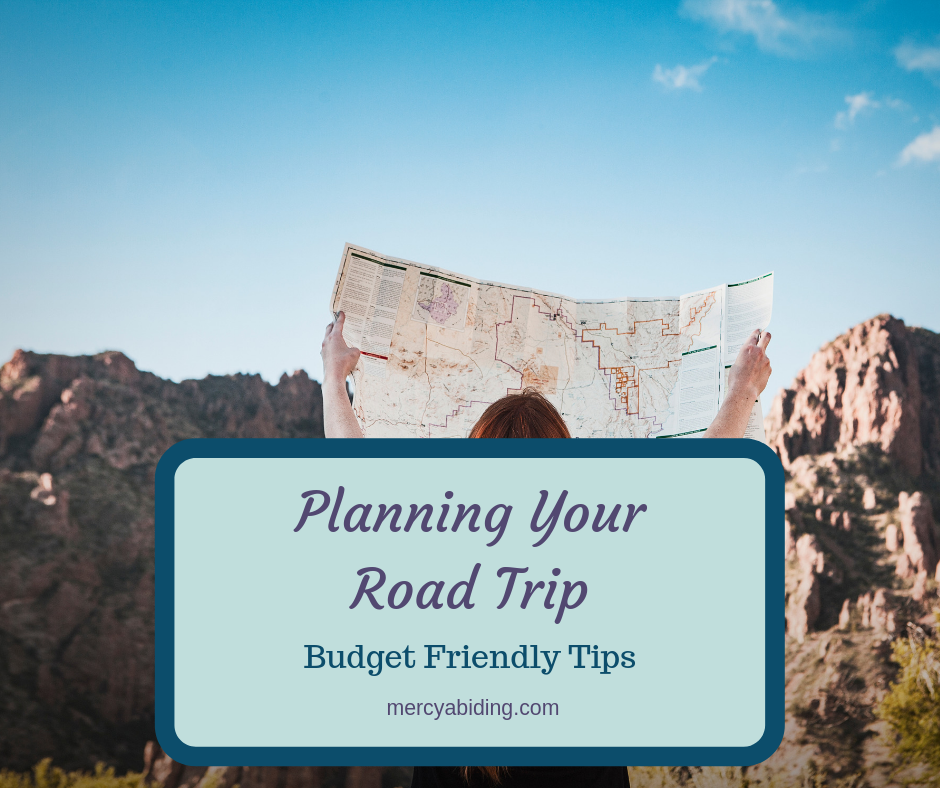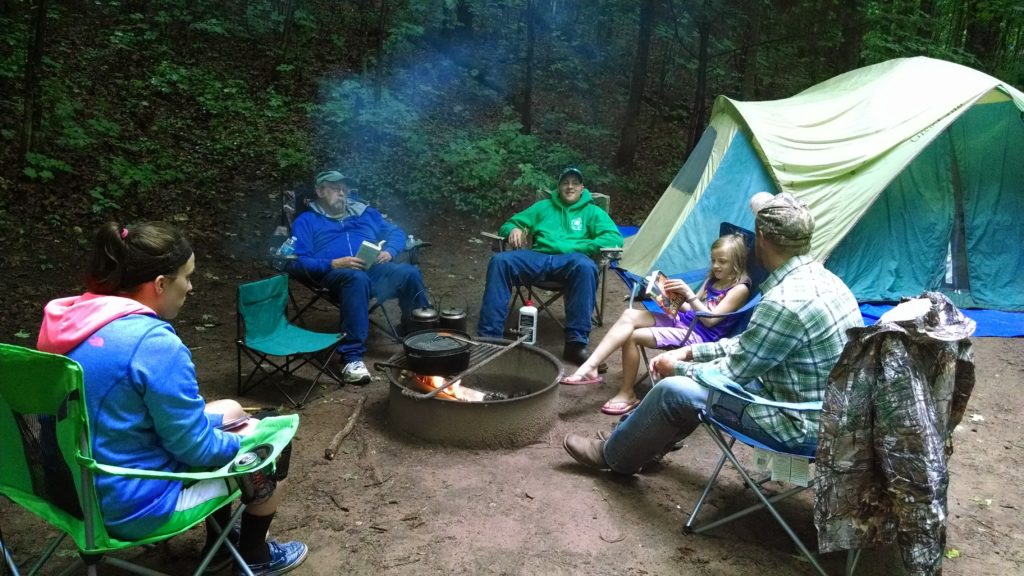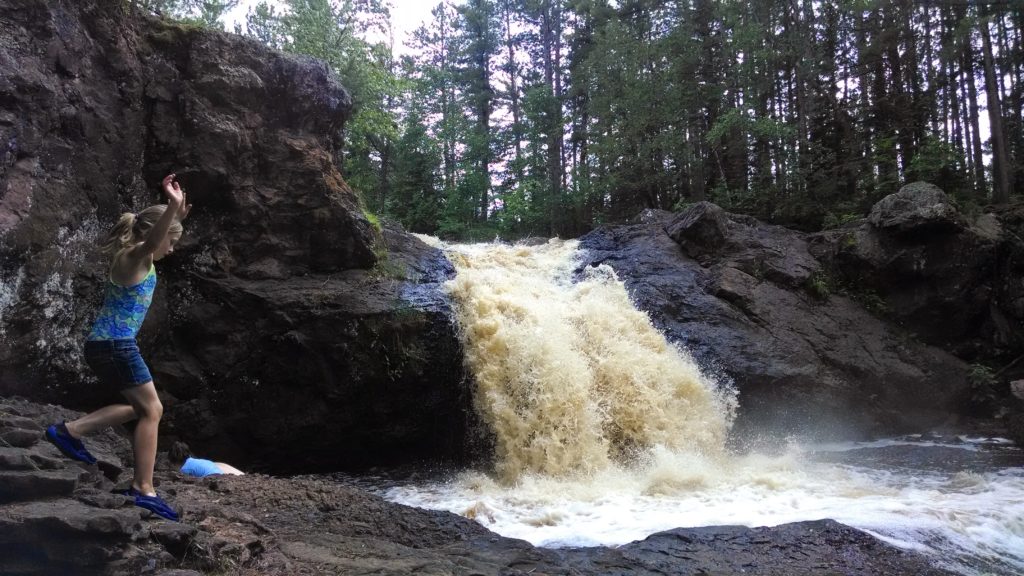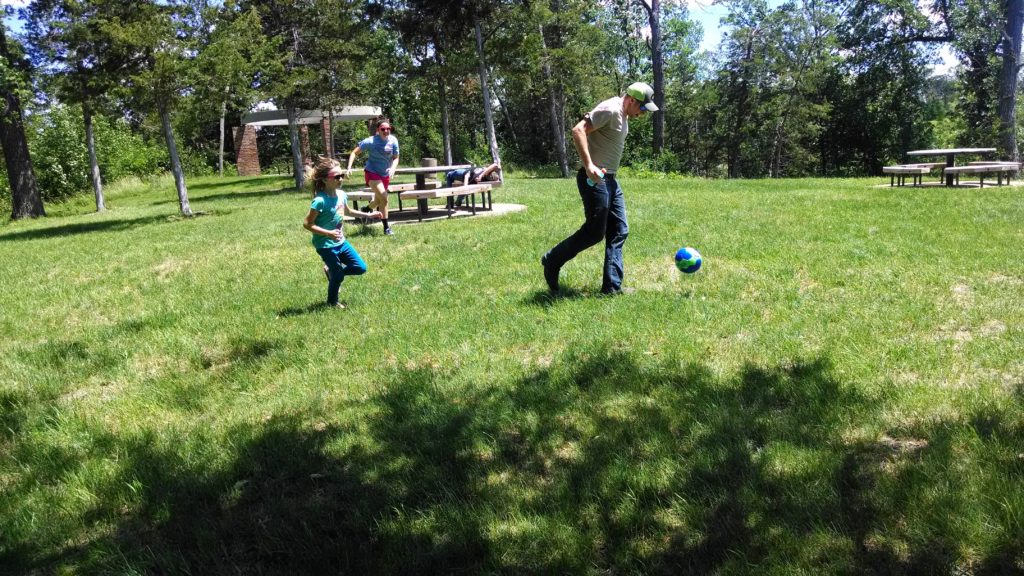
I love to travel. To see new sights, revisit old favorites, and make amazing memories with my family. Our preferred kind of vacation is a road trip. I love to see all the sights between here and there and it can be less expensive. While you could certainly just hop in the car, a little planning will make your road trip more enjoyable and budget friendly.
Budgeting for your road trip
You don’t want to plan an elaborate trip and then figure out you can’t afford it. The budget process is not static. As you plan, you may find that you need to adjust your length, type or style of trip for your budget. On the trip I am currently planning I had to make an adjustment. I really wanted to take the ferry to Isle Royale (I am a huge fan of the National Park Service!). Then I looked up the cost and it would be over $500 to get us all there and back. Not an option on this trip. So this will just have to stay on the bucket list.
Camping/Glamping/”Moteling”
Lodging is a big expense for your road trip. Choosing the style you want to stay in will make a big difference in your trip budget. Camping is the most economical if you already have or can borrow the equipment. But it is also the one most affected by the weather. You can camp in the pouring rain, but it is not as much fun (although we made the best of it on our girls’ first camping trip).

If you have access to a camper, this is the next most economical and the weather is not a huge concern. What you need to consider is how hauling around the camper will affect what you want to do. If you can leave it at the campsite and use your vehicle to tour around it makes the driving easier. Also take into account how pulling a camper will affect your gas mileage.
The most expensive, but totally convenient option is to stay in motels. They are readily available and not affected by normal weather (severe weather and all bets are off for all options!). They also come in a variety of price points from luxurious to “do we really want to stay here?”.
Other Financial Considerations
Gas and food are the other important considerations after type of lodging. The further you go and the longer you are away will drive these costs up. Then there are the optional expenses that you will need to think about, like souvenirs and snacks. For our trips, we tend to try to buy a few meaningful souvenirs, like a puzzle or a Christmas ornament from the area.
Decide on the Type of Road Trip
I think of road trips in two different categories: the drive and stay, and the drive and look. The drive and stay is where you drive to a location in the middle of things you want to see, set up your base camp, and then take day trips from there. The advantage of this style is that you are not constantly packing and unpacking. You also get a chance to explore an area in some depth. We did this on a trip to the Superior, Wisconsin area.

The drive and look is a road trip that is mostly on the road. You map out a route between things that you want to see and then travel to see different things every day. The advantage to this is that you can cover a lot of ground by driving every day. So if your goal is to see lots of new areas, this is the way to go.
Planning the road trip
Once you know your budget and the type of trip that you want to take, you will start planning the actual trip. If you want to do a drive and stay, then ideally pick an area that you can get to in a day or a day and a half. I used to do this with a map and pencil to determine how far we could get in a day. Now I just do some calculations in Google Maps. I also use Google Maps to determine lodging/camping in my destination area. A lot of the campgrounds will have websites that I can use to look up availability and compare the costs of different places.
Our Current Trip
The trip I am currently planning is mostly to go visit relatives and friends in Wisconsin. However, I also wanted to have some vacation and sightseeing. I started looking on the map at some of the sights it might be fun to see while in that part of the country. I found two National Lakeshores, in addition to Isle Royale, and Sualt Ste. Marie. Plus one of the places that we have never been is the Mackinac Bridge between lakes Huron and Michigan.
So I started putting these places into Google Maps (plus the locations of friends and relatives) and planning how they might fit into a trip. Like I mentioned above, I eliminated Isle Royale for budget reasons, and eliminated a few other spots for time constraints. One thing to keep in mind is that Google gives driving times, you will need to add in time for sightseeing, gas stops, rest stops, and stops to get the wiggles out.

Once I had the trip in Google Maps, I could calculate my gas cost. You do that by dividing the mileage by miles per gallon for your vehicle. Then take that number and multiply it by the cost per gallon of gas in the area you will be visiting. I round this number up a bit to account for side trips we decide to take. If this number seems too high for the budget you can go back to the map and see if eliminating a location or changing the route would improve things. I have often had to take out my furthest location because we didn’t have enough money or time.
Saving Money on Food
While the cost of fuel and accommodations are determined by someone else, food is the area of the budget you will have the most control over. Just like at home, the cheapest way to eat is to prepare the food yourself. This can even by done in a motel if you select one that has a kitchen or if you are good at cooking in a microwave. We sometimes compromised by getting frozen dinners.
When we had lots of kids at home, we tended to prepare all of our meals. This would mean allowing time in the morning and evening for cooking (and cleanup) by not starting as early or driving as late. We would start the morning with eggs or pancakes, and then in the evenings we would make anything from burgers to Chicken on Thyme. Lunchtime was usually sandwiches. By cooking our own meals we were able to afford to take the children on lots of fun camping trips that would not have been possible if we had needed to eat out for every meal.

The next most economical way to eat that does not require cooking or major cleanup is to have a simple breakfast of cereal, yogurt, cheese, fruit of some combo thereof. Then have sandwiches, carrots, and fruit for lunch. You can then eat out for dinner (or if your family will let you get away with it, eat out for lunch when it is cheaper, and feed them sandwiches for dinner). This is probably what we will be doing for our vacation up north. That way we are still able to enjoy some of the local specialties, save some money, and still not have us dragging along all the pots and dishes.
Putting it all together
I have used this technique of budget, mapping, and planning to take trips all over the U.S. Some worked according to plan, and some did not. But all of our trips gave us lasting family memories. I hope this will help you to plan out your next road trip, and save yourself some money in the process. What are your favorite tips for road trips?
